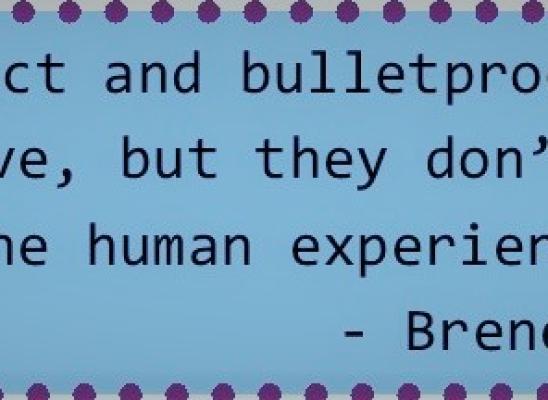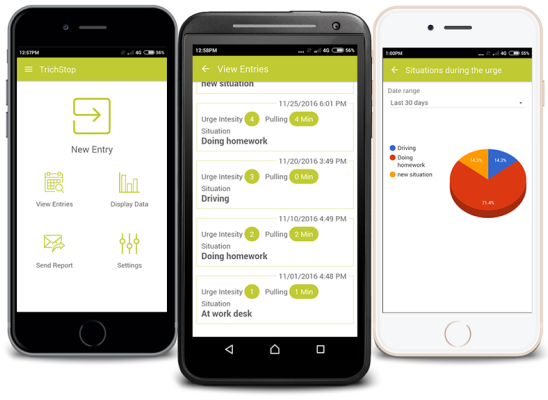Snap Out of It!: Dealing with Hair Pulling Trances
Online test
Find out the severity of your symptoms with this free online test
Have you ever had the experience of getting “lost” in an episode of hair pulling, only later realizing that you even pulled or not noticing how much time has passed? If so, you’ve probably experienced what’s commonly known as a “hair pulling trance.”
Hair pulling trances are actually quite common among people who pull. But just what are they, and more importantly, how can you get out of one?
What Is A Hair Pulling Trance?
The word “trance” can conjure up all kinds of images and assumptions.
In general, a trance is considered to be a state of altered consciousness. During that time, the person may not be fully aware of what is happening. Recent neuroimaging studies have found significant changes in brain activity and sensory processing when someone is in a trance state. Trances are often associated with being hypnotized or “spellbound”, meditation, or various spiritual healing practices.
Hair pulling trances are none of those things, but they are a real phenomenon experienced by a significant number of people who pull. A hair-pulling trance is a prolonged episode of hair-pulling that is all-engaging. In one online forum, a person described the experience as “a feeling of being completely hypnotized into pulling so much so that hours can go by and it doesn't even feel like you're breathing.” People who experience trances sometimes find themselves pulling when doing things like watching a movie, on a car ride, when they’re bored, or even when they’re stressed out.
During a hair pulling trance, the person becomes intently focused and completely absorbed in the experience of pulling. They may be completely unaware of what’s happening around them and they might not even be aware that they’re pulling. As a result, the use of competing responses, a critical component of Habit Reversal Training (HRT), is rather ineffective because they’re not going to attend to it. The focus of the trance is pulling.
So, if you find yourself experiencing hair pulling trances, what can you do?
Dealing with Trances
People who experience hair pulling trances describe feeling frustrated when they realize they’ve pulled, often following the trance episode when they see the hair they’ve pulled. Some people report that they sometimes have moments during their pulling trance when they are aware that they’re pulling but “it feels too good to stop”.
Has anyone found success in avoiding or delaying trance pulling? Some people report that they’ve found relief in delaying the urge to pull by breathing or finding ways to distract themselves like going for a walk or talking to someone. Seeking help and support has been helpful for some in learning how to recognize triggers, stay grounded and more able to cope with sometimes intense thoughts and feelings.
Strategies You Can Try
Of course, we know that hair pulling is highly heterogenous and how you experience your hair pulling trances may be very different from someone else’s experience. Still, there are strategies that have been helpful for some and may be the right choice for you too.
The key to dealing with hair pulling trances is to increase your awareness and understanding of the way your trance unfolds and the experiences that shape your trance behavior:
Reflect on your experience with trances:
- Do they come on suddenly or gradually? What’s that feel like?
- What do you think triggers your trances? Are your triggers internal or external?
- Where are you when your trances happen?
- Who is near you when they happen?
- What emotions are you struggling with or not understanding?
These clues can help you be more aware of the situations and experiences related to your trance pulling. When you understand what the risks are, you are in a better position to take action.
Have A Plan to deal with your trances:
When you find yourself on the verge of entering into the trance-state, you want to choose actions that are easy to use and easy to remember because you want to act quickly. Here are a few strategies you can try:
- Breathing exercises like box breathing or you can try one of the many breathing apps out there. The goal of breathing is to reduce tension by controlling your breath.
- Let it RAIN! The RAIN technique is a mindfulness technique that you can use as a way to circumvent the urge to pull.
Recognize what is happening.
Allow the experience to be there, as is, with no judgment.
Investigate with kindness.
Nurture with self-compassion.
RAIN allows you to recognize what’s happening and slightly detach yourself from it. This creates space for you to acknowledge and explore your feelings beyond the urge to pull.
- Ground yourself. Grounding is a technique that lets you shift your focus away from pulling and onto something else that you can anchor to. A simple and effective grounding technique is popularly referred to as 5-4-3-2-1. To do it, simply start by focusing on five things you can see, then four things you can hear, three things you can feel, two things you can smell, and finally one thing you can taste. As you do this, you’re shifting your focus away from the internal experience of the urge onto something external, diminishing the intensity of the urge to pull. A quick body scan can also ground you in the moment.
- Distract yourself. Take a walk. Call a friend or accountability partner.
An Ounce of Prevention
Prevention is more than just stopping a trance from happening. Prevention goes a step further and lays a foundation for avoiding trances by removing or avoiding the things that trigger them in the first place. It’s a process of discovery to identify the triggers and stressors that build up and create the distress that is the precursor to your trance.
As you identify these stressors, you may have to do things like change or redefine your various roles, set new boundaries with others, strike a healthier work-life balance, or even avoid certain situations that trigger pulling for you.
Avoiding hair pulling trances takes work and it takes time, but it is possible to do. As you allow yourself to explore and deal with difficult feelings and experiences, you open yourself to the possibility of growth and change. A therapist can help you work through these issues and find what works for you.
References
1. Rogerson, R. G., Barnstaple, R. E., & DeSouza, J. F. (2021). Neural Correlates of a Trance Process and Alternative States of Consciousness in a Traditional Healer. Brain sciences, 11(4), 497. https://www.ncbi.nlm.nih.gov/pmc/articles/PMC8070722/
2. Hove, M. J., Stelzer, J., Nierhaus, T., Thiel, S. D., Gundlach, C., Margulies, D. S., Van Dijk, K. R., Turner, R., Keller, P. E., & Merker, B. (2016). Brain Network Reconfiguration and Perceptual Decoupling During an Absorptive State of Consciousness. Cerebral cortex (New York, N.Y. : 1991), 26(7), 3116–3124. https://pubmed.ncbi.nlm.nih.gov/26108612/
3. Trichstop.com. (2020, October 23). October 2020 webinar - Exploring hair pulling "Trances" [Video]. YouTube. https://youtu.be/As8DrgHPqP4
Online test
Find out the severity of your symptoms with this free online test
Start your journey with TrichStop
Take control of your life and find freedom from hair pulling through professional therapy and evidence-based behavioral techniques.
Start Now



